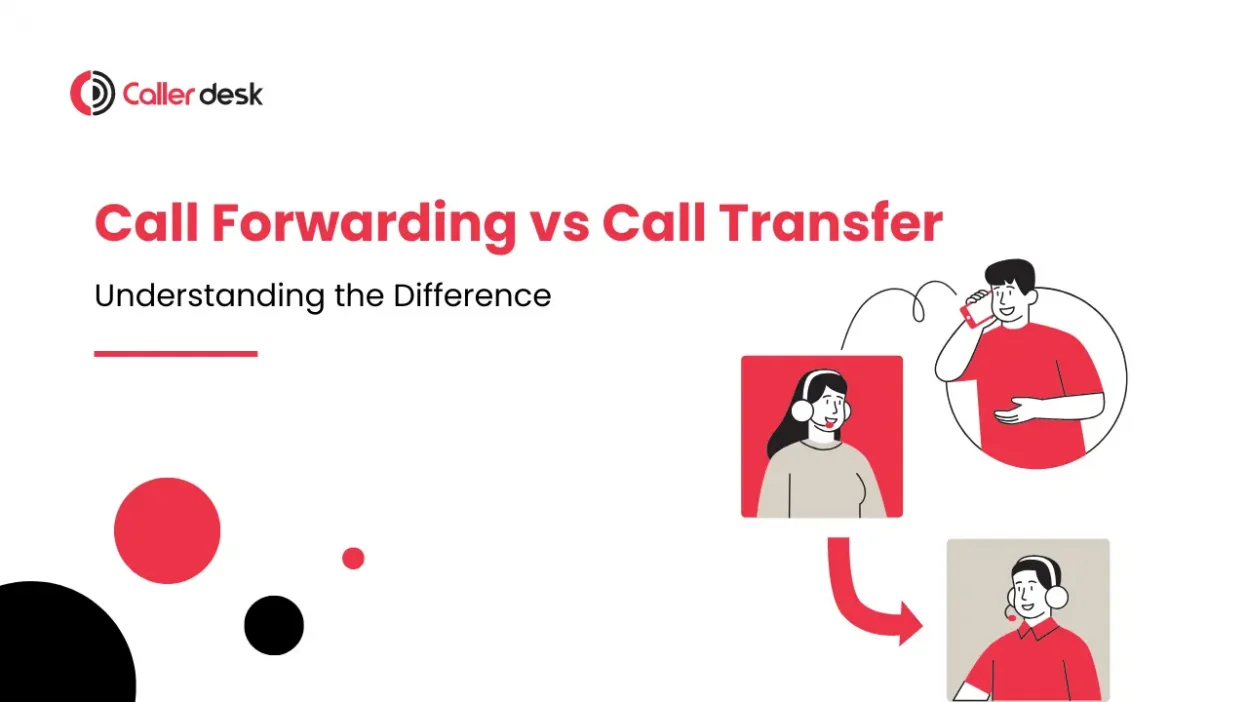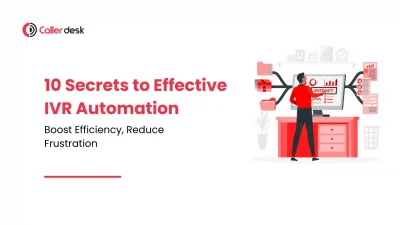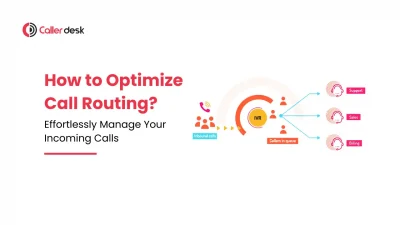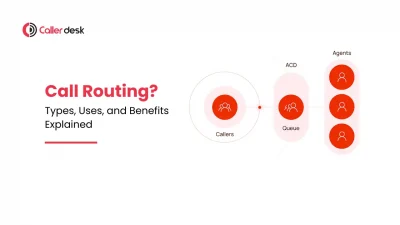Is your call center managing customer interactions as efficiently as it could be?
Efficiently handling incoming calls is essential for businesses, especially in call centers, where smooth communication can make a significant difference. Ensuring every call reaches the right person not only improves customer satisfaction but also boosts overall productivity.
Two important tools that help with this are call forwarding and call transfer. Although they might sound similar, they serve different purposes and are used in various situations to improve call management. Knowing the difference between call forwarding and call transfer can greatly enhance customer service and make your business operations smoother.
Call forwarding: Call forwarding is a feature that automatically redirects incoming calls from one number to another predetermined number. This process ensures that calls are answered even if the primary recipient is unavailable. Usually, the caller has no idea that their call has been redirected.
Call Transfer: Call transfer involves moving an active call from one agent or department to another within the same organization. The initial recipient of the call determines that another agent or department is better suited to handle the caller’s needs and transfers the call accordingly.
11 Key Differences Between Call Forwarding and Call Transfer You Need to Know
Understanding the difference between call forwarding and call transfer can significantly boost customer service and streamline your business operations.
1. Purpose:
- Call Forwarding: Ensures that calls are answered by redirecting them to an available number or agent outside the immediate handling area.
- Call Transfer: Moves an active call to another agent or department within the organization to better address the caller’s needs.
2. Implementation:
- Call Forwarding: Typically used for redirecting incoming calls based on predefined rules and conditions, ensuring business continuity and availability.
- Call Transfer: Used in real-time by agents to route calls to the appropriate person or department during an ongoing conversation.
3. Customer Experience:
- Call Forwarding: When a call is forwarded, the recipient is unaware that it is being routed to a new number or a person. This ensures the caller has a seamless and uninterrupted experience.
- Call Transfer: When you transfer a call, the caller might be put on hold while the call is connected to another person. However, with a warm transfer, the current agent informs the next agent about the caller’s concern before the transfer is finished, making the transition easier for the caller.
4. Common Scenarios:
- Call Forwarding: Ideal for after-hours support, remote teams, and managing high call volumes without missing calls.
- Call Transfer: Best suited for in-call rerouting to ensure that customer queries are handled by the most appropriate and knowledgeable staff.
5. Call Destination:
- Call Forwarding: Redirects calls to external numbers, voicemails, or other lines outside the immediate handling team.
- Call Transfer: Transfers calls internally within the organization to other agents or departments.
6. Use in Crisis Management:
- Call Forwarding: Useful for disaster recovery plans by redirecting calls to different locations or remote workers.
- Call Transfer: Ensures continuity within the call center by redirecting calls to available agents when certain agents are overwhelmed or unavailable.
7. Complexity and Setup:
- Call forwarding is generally straightforward to configure using basic criteria based on availability, time of day, or other situations.
- Call Transfer: This can be a bit more complicated because it involves making quick decisions and coordinating between agents to ensure a seamless transition for the caller.
8. Agent Involvement:
- Call Forwarding: Requires no action from agents once set up; the system automatically forwards calls based on predefined rules.
- Call Transfer: Requires active participation from agents to identify the need for transfer and execute it, often involving communication with the receiving agent.
9. Operational Focus:
- Call Forwarding: Focuses on maintaining availability and ensuring that calls are answered by any available agent or device.
- Call Transfer: Focuses on enhancing service quality by connecting callers to the most suitable agent or department within the organization.
10. Cost:
- Call Forwarding: May incur additional costs, especially if calls are forwarded to long-distance or international numbers.
- Call Transfer: Typically involves internal call management without additional external call charges, but requires efficient handling to avoid excessive internal transfers.
11. Technology Integration:
- Call Forwarding: Often integrated with simple telephony systems or mobile devices, useful for basic call management.
- Call Transfer: Integrated within more complicated call center software with features like skill-based routing and advanced reporting.
Conclusion
Both call forwarding and call transfer are necessary for improving customer service and simplifying business communications. Using these features effectively ensures that every customer call is managed quickly and professionally, which boosts customer satisfaction and loyalty.
Call forwarding makes sure you never miss a call, while call transfer connects callers to the right person for specialized help. Mastering these tools is key for any business that wants to improve its communication.
For the best telephony solutions visit Caller Desk. We provide excellent services to keep your business connected and running smoothly.



